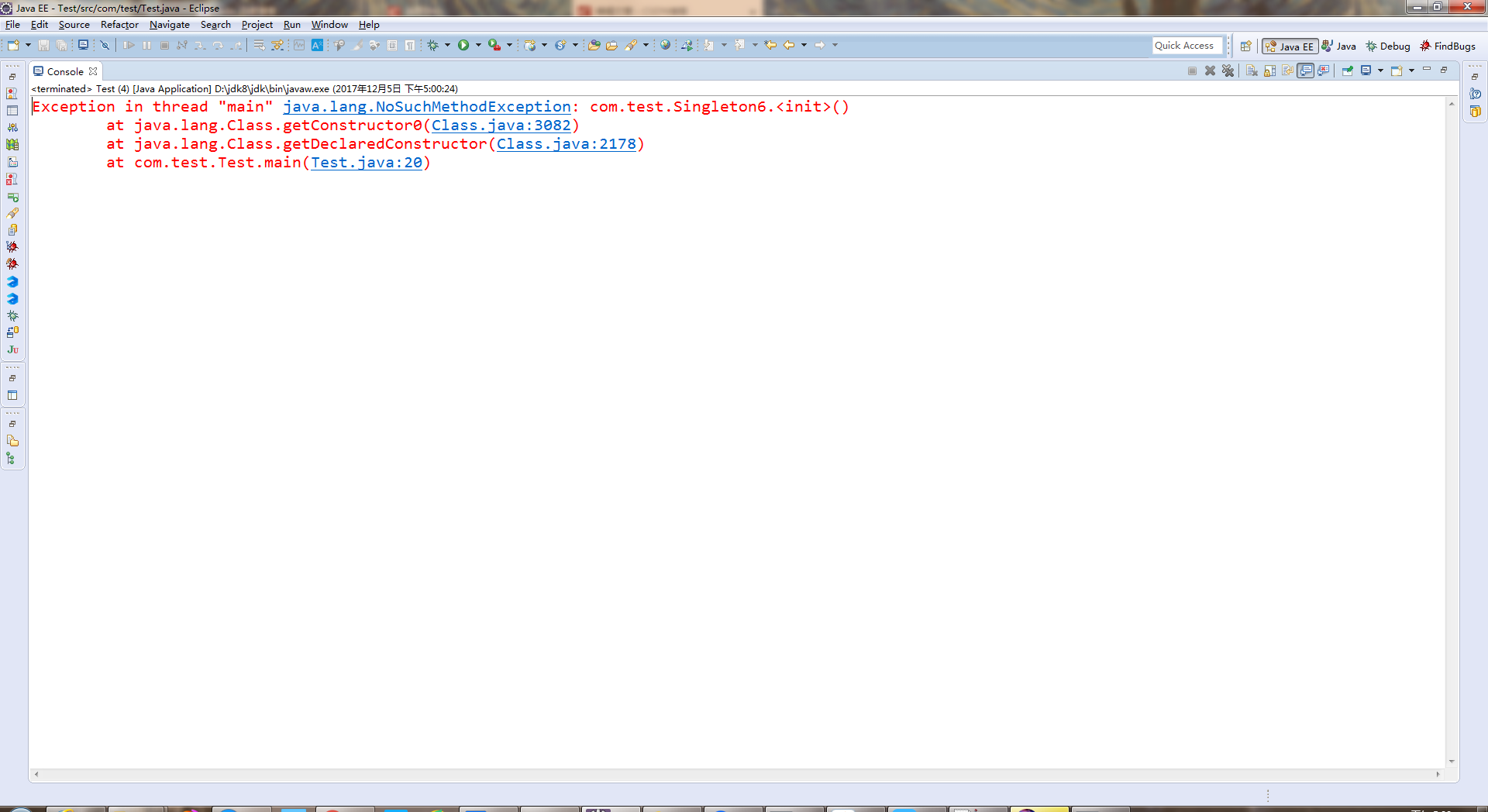First of all, there is no single pattern of hungry Han, lazy, if you need Baidu
A little better than the Hungry Han style is the static inner class singleton
Paste code here
package com.test;
public class SimpleTest {
private static class SimpleNB {
private static final SimpleTest INSTANCE = new SimpleTest();
}
private SimpleTest() {
}
public static SimpleTest getIns() {
return SimpleNB.INSTANCE;
}
}
Paste code here
package com.test;
import java.lang.reflect.Constructor;
import java.lang.reflect.InvocationTargetException;
import java.util.ArrayList;
import java.util.Arrays;
import java.util.Collection;
import java.util.Collections;
import java.util.Comparator;
import java.util.List;
import java.util.function.Predicate;
/**
* @date 2017-10-20
* @author xgf
*
*/
public class Test {
public static void main(String[] args) throws NoSuchMethodException, SecurityException, InstantiationException, IllegalAccessException, IllegalArgumentException, InvocationTargetException {
Constructor<SimpleTest> declaredConstructor = SimpleTest.class.getDeclaredConstructor();
declaredConstructor.setAccessible(true);
SimpleTest newInstance1 =declaredConstructor.newInstance();
SimpleTest newInstance2 =declaredConstructor.newInstance();
System.out.println(newInstance1.equals(newInstance2));
}
}
Post a picture

Then, based on this problem, come up with a solution to use enumeration because jvm is enumerated and constructor visibility is immutable
Paste code here
package com.test;
public enum Singleton6
{
INSTANCE;
private SimpleTest instance;
Singleton6()
{
instance = SimpleTest.getIns();
}
public SimpleTest getInstance()
{
return instance;
}
}package com.test;
import java.lang.reflect.Constructor;
import java.lang.reflect.InvocationTargetException;
import java.util.ArrayList;
import java.util.Arrays;
import java.util.Collection;
import java.util.Collections;
import java.util.Comparator;
import java.util.List;
import java.util.function.Predicate;
/**
* @date 2017-10-20
* @author xgf
*
*/
public class Test {
public static void main(String[] args) throws NoSuchMethodException, SecurityException, InstantiationException, IllegalAccessException, IllegalArgumentException, InvocationTargetException {
Constructor<Singleton6> declaredConstructor = Singleton6.class.getDeclaredConstructor();
declaredConstructor.setAccessible(true);
Singleton6 newInstance1 =declaredConstructor.newInstance();
Singleton6 newInstance2 =declaredConstructor.newInstance();
System.out.println(newInstance1.equals(newInstance2));
// Singleton6 instance1 = Singleton6.INSTANCE;
// Singleton6 instance2 = Singleton6.INSTANCE;
// System.out.println(instance1.equals(instance2));
// Constructor<SimpleTest> declaredConstructor = SimpleTest.class.getDeclaredConstructor();
// declaredConstructor.setAccessible(true);
// SimpleTest newInstance1 =declaredConstructor.newInstance();
// SimpleTest newInstance2 =declaredConstructor.newInstance();
// System.out.println(newInstance1.equals(newInstance2));
}
}
Then paste out the console output

At this point, you should understand the basic point. When you see people here, I just want you to share more (whether it's technology or anything else) and be grateful to your predecessors.What's wrong? Please comment or send me a private message. Thank you